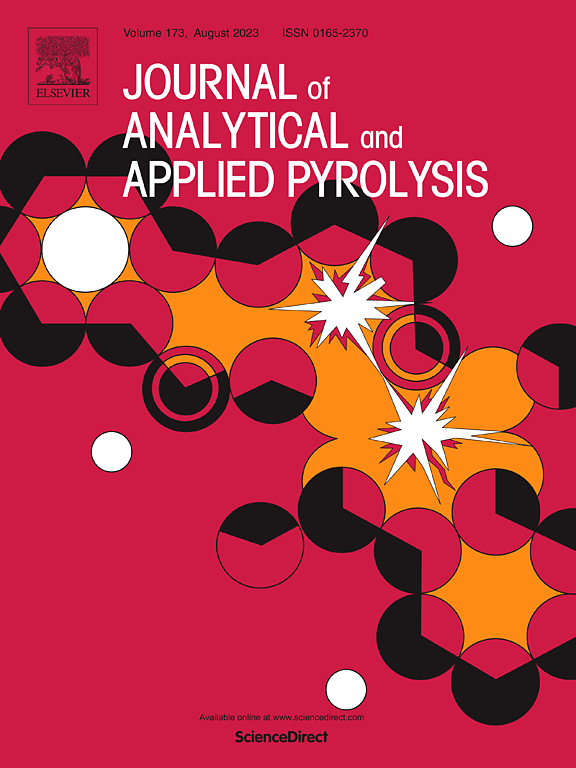Unveiling atomic mechanism of organic sodium on the inhibition of tar and the release behavior of sodium in Zhundong coal hydropyrolysis via ReaxFF MD simulation
IF 5.8
2区 化学
Q1 CHEMISTRY, ANALYTICAL
引用次数: 0
Abstract
In this work, the effect of organic Na on coal hydropyrolysis was investigated at the atomic level by reactive molecular dynamics (ReaxFF MD) simulation, and verified by corresponding hydropyrolysis experiment. Results show that organic Na can reduce the initial temperature of the hydropyrolysis reaction, promote the release of H2O and volatile gases, and accelerate the decomposition of coal macromolecules. The atomic inhibition mechanism of organic Na on tar formation was revealed, through inhibiting the formation path of tar, promoting tar condensation to coke, and enhancing the release of H2O and other volatiles in tar. Additionally, through statistical analysis of Na-containing products and tracking real-time reaction trajectories, three primary pathways for the migration and transformation of organic Na were identified. First, organic Na breaks at the O-Na bond to form atomic Na, which then reacts with inorganic components like H₂O and -OH, a process that occurs frequently. The resulting atomic Na combines with gaseous hydrocarbons to form gaseous Na, which is subsequently released. Tar-Na is formed when atomic Na interacts with tar molecules. These findings provided valuable molecular dynamics insights for exploring the sustainable and efficient conversion of high-alkali coal resources.
通过ReaxFF MD模拟揭示了有机钠在准东煤加氢热解过程中抑制焦油的原子机理及钠的释放行为
本文通过反应分子动力学(ReaxFF MD)模拟在原子水平上研究了有机Na对煤加氢热解的影响,并通过相应的加氢热解实验进行了验证。结果表明,有机Na可以降低加氢热解反应的初始温度,促进H2O和挥发性气体的释放,加速煤大分子的分解。揭示了有机Na对焦油形成的原子抑制机制,通过抑制焦油的形成路径,促进焦油凝结成焦,促进焦油中H2O等挥发物的释放。此外,通过对含Na产物的统计分析和实时反应轨迹的跟踪,确定了有机Na迁移和转化的三个主要途径。首先,有机Na在O-Na键断裂,形成原子Na,然后与h2o和-OH等无机成分反应,这是一个经常发生的过程。生成的Na原子与气态碳氢化合物结合形成气态Na,随后释放出来。当Na原子与tar分子相互作用时形成tar -Na。这些发现为探索高碱煤资源的可持续高效转化提供了有价值的分子动力学见解。
本文章由计算机程序翻译,如有差异,请以英文原文为准。
求助全文
约1分钟内获得全文
求助全文
来源期刊
CiteScore
9.10
自引率
11.70%
发文量
340
审稿时长
44 days
期刊介绍:
The Journal of Analytical and Applied Pyrolysis (JAAP) is devoted to the publication of papers dealing with innovative applications of pyrolysis processes, the characterization of products related to pyrolysis reactions, and investigations of reaction mechanism. To be considered by JAAP, a manuscript should present significant progress in these topics. The novelty must be satisfactorily argued in the cover letter. A manuscript with a cover letter to the editor not addressing the novelty is likely to be rejected without review.

 求助内容:
求助内容: 应助结果提醒方式:
应助结果提醒方式:


